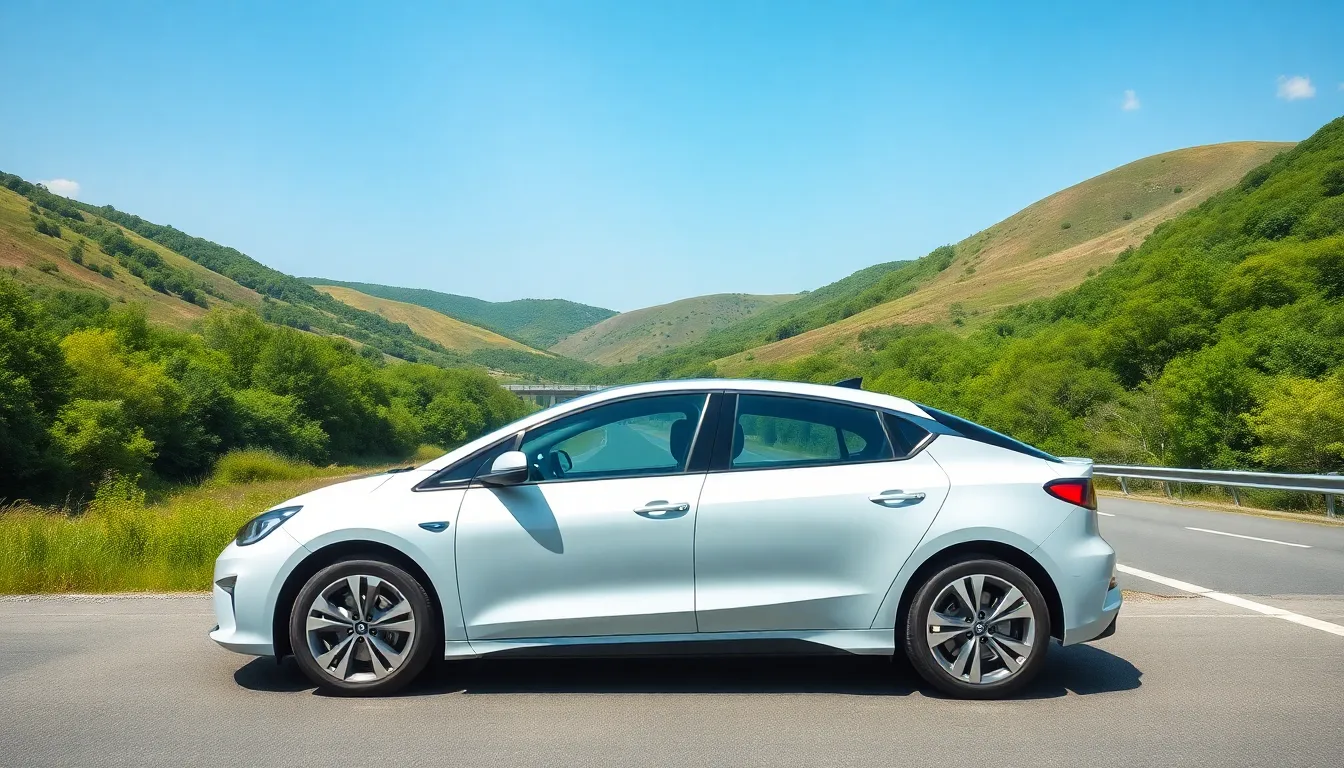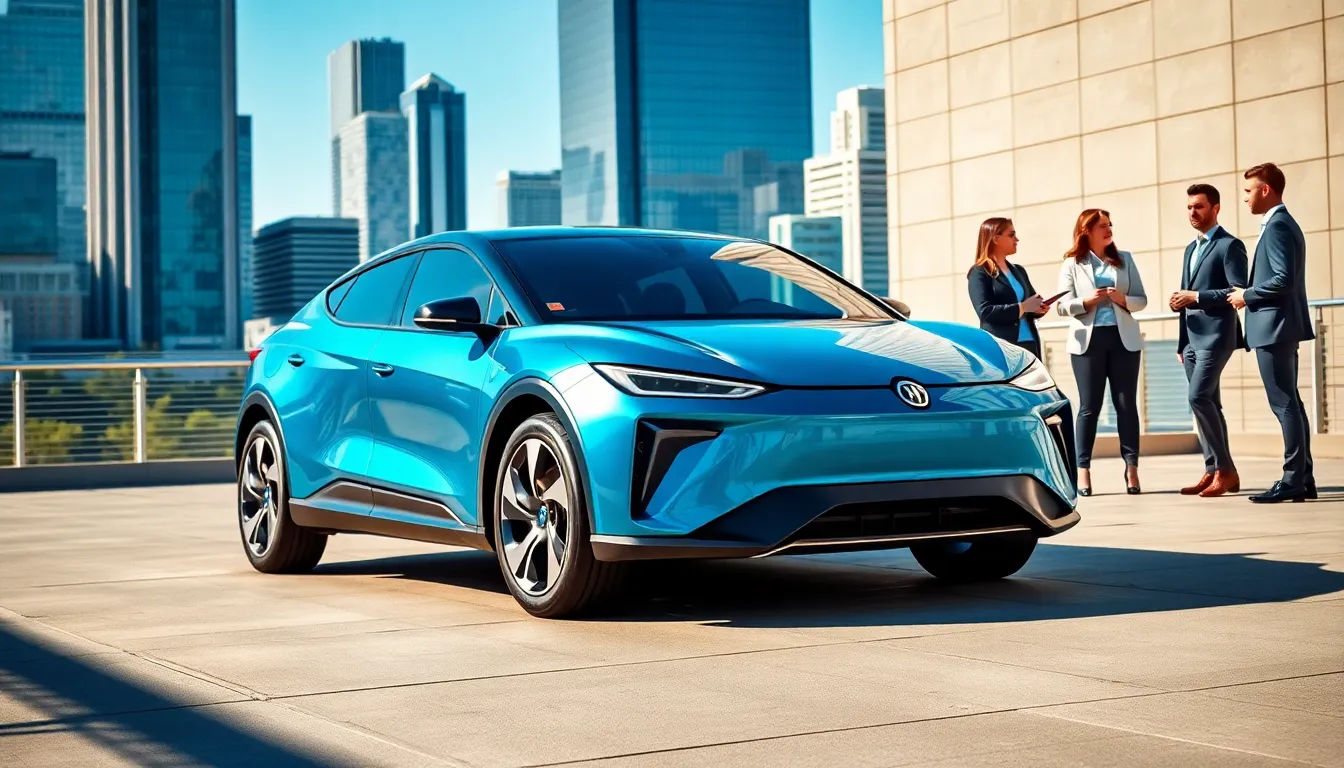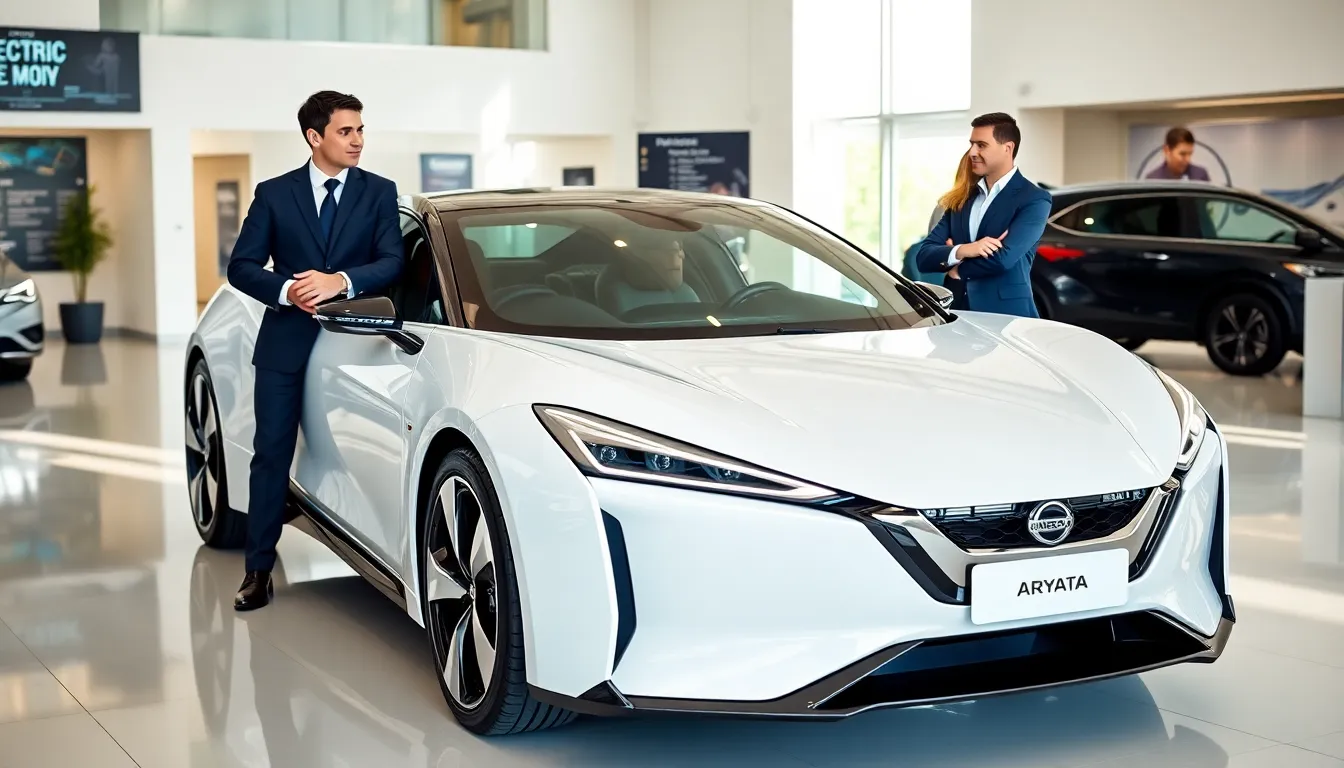Table of Contents
ToggleAs the world shifts towards sustainable transportation, electric cars are leading the charge. With growing concerns about climate change and rising fuel prices, understanding electric car efficiency has never been more crucial. These vehicles promise not only a reduction in carbon emissions but also significant savings for drivers.
Electric car efficiency isn’t just about the miles per charge; it encompasses various factors including battery technology, driving habits, and energy sources. By exploring these elements, consumers can make informed decisions that align with their eco-friendly goals. As the market evolves, staying informed about electric car efficiency will empower drivers to maximize their investment while contributing to a greener planet.
Overview of Electric Car Efficiency
Electric car efficiency encompasses several critical components beyond simply measuring distance per charge. Key factors include battery technology, which impacts energy storage and delivery, and driving habits, which directly influence energy consumption.
Battery Technology
Battery technology plays a pivotal role in electric vehicle efficiency. Lithium-ion batteries dominate the market due to their lightweight nature and high energy density. Advanced battery management systems optimize performance by controlling charge cycles and ensuring maximum lifespan.
Driving Habits
Driving habits significantly affect how efficiently an electric car utilizes energy. Smooth acceleration and deceleration enhance efficiency, while aggressive driving can increase energy consumption by up to 30%. Maintaining a steady speed, utilizing regenerative braking, and minimizing excessive idling also contribute to improved energy use.
Energy Sources
The source of electricity used to charge electric cars impacts their overall environmental efficiency. Charging via renewable sources, like solar or wind, enhances the green credentials of electric vehicles. In contrast, relying on fossil fuel-generated electricity can diminish the positive impacts on overall emissions.
Aerodynamics and Weight
Aerodynamics and vehicle weight determine the energy efficiency of electric cars. Streamlined designs reduce air resistance, enhancing performance, especially at higher speeds. Keeping the vehicle lightweight through design innovations also conserves energy, maximizing range.
Climate Considerations
Climate conditions influence electric car efficiency. Colder temperatures can reduce battery performance and overall range. Electric vehicles operating in extreme climates may see a drop in efficiency of 15-40%, emphasizing the need for adaptive strategies in different environments.
Understanding these factors allows consumers to improve their electric vehicle efficiency and make informed choices that align with sustainability objectives.
Factors Influencing Electric Car Efficiency

Electric car efficiency depends on various interconnected factors. Understanding these can enhance performance and sustainability.
Battery Technology
Battery technology plays a critical role in electric car efficiency. Lithium-ion batteries dominate the market due to their high energy density, contributing significantly to vehicle range. Capacity (measured in kilowatt-hours, kWh) determines how much energy the battery can store, directly affecting distance per charge. Advanced battery management systems optimize charging and discharging processes, enhancing performance and longevity. Innovations, such as solid-state batteries and improvements in charging speed, promise further gains in efficiency while reducing charging times.
Vehicle Design
Vehicle design significantly impacts energy efficiency. Aerodynamics influences drag; a streamlined shape reduces wind resistance, which in turn conserves energy while driving. Lightweight materials, such as aluminum and carbon fiber, decrease overall vehicle weight, improving range and acceleration. The arrangement of components, including battery placement, affects the center of gravity, contributing to better handling and stability. Integrating energy-efficient features, such as regenerative braking systems, allows electric cars to recover energy during braking and boosts total efficiency.
Driving Conditions
Driving conditions largely determine electric car efficiency. Urban driving often leads to frequent stops and starts, which can enhance regenerative braking benefits but may also decrease overall range due to increased energy consumption. In contrast, highway driving usually provides better efficiency through consistent speed. Road conditions, including elevation changes and surface materials, impact energy use. Additionally, temperature affects battery performance; extreme cold can reduce range, while moderate temperatures optimize efficiency. Understanding these conditions helps drivers adapt their habits to maximize efficiency.
Comparing Electric Cars to Traditional Vehicles
Comparing electric cars to traditional vehicles highlights key differences in efficiency and environmental impact. Electric vehicles (EVs) convert over 60% of the electrical energy from the grid to power at the wheels, while conventional gasoline vehicles convert only about 20% of the energy stored in gasoline.
| Factor | Electric Cars | Traditional Vehicles |
|---|---|---|
| Energy Conversion | >60% | ~20% |
| Emissions | Zero tailpipe emissions | Significant greenhouse gases |
| Maintenance | Lower due to fewer moving parts | Higher due to engine complexity |
| Fuel Cost | Approximately $0.03 per mile | Approximately $0.12 per mile |
Electric cars produce no tailpipe emissions, reducing overall air pollution in urban areas. Traditional vehicles release harmful gases that contribute to climate change and public health issues.
Battery technology in EVs, particularly lithium-ion systems, enables higher efficiency, while traditional vehicles rely on internal combustion engines. Internal combustion engines also require regular maintenance and combustion-related repairs. In contrast, electric cars generally involve fewer components and lower maintenance costs, contributing to a longer lifespan and reduced ownership expenses.
Driving range varies significantly between electric and traditional vehicles. Electric cars typically require charging every 100 to 300 miles, while conventional vehicles can often travel 300 to 500 miles on a full tank. Charging infrastructure plays a critical role in this comparison, as widespread charging stations enhance the convenience of owning an electric car.
Driving conditions further influence performance. Urban driving scenarios often favor electric vehicles due to their efficiency in stop-and-go traffic. In contrast, highways may provide better fuel efficiency for traditional vehicles.
Assessing electric cars against traditional vehicles reveals substantial differences in energy efficiency, environmental impact, and overall ownership experience. This comparison emphasizes the advantages of electric cars in promoting sustainable transportation.
Real-World Efficiency Metrics
Understanding real-world efficiency metrics for electric cars reveals crucial insights into their performance. These metrics provide valuable data on how electric vehicles (EVs) operate under various conditions.
Range Per Charge
Range per charge defines how far an electric car can travel on a fully charged battery. Typical electric vehicles deliver a range between 150 and 370 miles on a single charge, depending on factors like vehicle model, battery capacity, and driving conditions. For instance, the Tesla Model S Long Range reaches approximately 405 miles, while compact models like the Nissan Leaf offer around 150 miles. Various factors influence this range, including driving speed, terrain, and usage of heating or air conditioning. Cold weather can reduce range by up to 40%, emphasizing the need for efficient battery management systems.
Energy Consumption Rates
Energy consumption rates measure how much energy an electric vehicle uses per mile driven. This metric is usually expressed in kilowatt-hours per 100 miles (kWh/100 miles). On average, electric vehicles consume between 24 and 30 kWh/100 miles. For example, the Hyundai Kona Electric demonstrates efficient energy use at about 28 kWh/100 miles, contrasting with less efficient models that may exceed 30 kWh/100 miles. Driving style significantly impacts energy consumption; smooth acceleration and deceleration contribute to lower consumption rates. Additionally, external conditions such as temperature and road type can affect these metrics, impacting overall energy efficiency.
Future Trends in Electric Car Efficiency
Emerging technologies and innovations are poised to significantly enhance electric car efficiency. Advancements in battery technology, including the development of solid-state batteries, promise higher energy densities and faster charging times. Solid-state batteries could offer up to 50% more energy density than current lithium-ion batteries, resulting in longer ranges per charge.
Improvements in aerodynamics are also a focal point for future vehicle designs. Companies are increasingly utilizing computational fluid dynamics to create shapes that minimize air resistance. Enhanced aerodynamics can improve overall efficiency by reducing the energy required to overcome wind resistance during travel.
Incorporating lightweight materials is another vital trend. Automakers are exploring alternatives like carbon fiber and aluminum to decrease vehicle weight without sacrificing safety or performance. Lower weight translates to better energy efficiency, allowing electric vehicles (EVs) to travel further on a single charge.
Artificial intelligence (AI) is set to play a key role in optimizing driving habits and energy consumption patterns. Smart driving systems can analyze real-time data to suggest more efficient routes and adjust vehicle settings for improved performance. These systems can adapt driving behavior to maximize energy savings in various conditions.
Charging infrastructure is rapidly evolving as well. The rollout of ultra-fast charging stations is underway, reducing charge times to as little as 15 minutes in some cases. This expansion will enable electric vehicles to be more accessible for long-distance travel, enhancing their practicality and appeal.
Renewable energy integration offers substantial potential for improving the environmental efficiency of electric cars. As the grid becomes more reliant on solar, wind, and other renewable sources, the overall carbon footprint of charging electric vehicles will diminish. Transitioning to a renewable-based energy supply can further amplify the environmental benefits of EVs.
Government policies and incentives will likely encourage these trends. Programs promoting research and development, tax credits for consumers, and regulations aimed at increasing EV adoption can drive efficiency improvements across the industry. By fostering innovation and expanding market access, governments can enhance the performance and appeal of electric vehicles.
This landscape of future trends indicates a sustained focus on enhancing electric car efficiency through technology, design, and infrastructure improvements.
Electric car efficiency is a multifaceted topic that extends beyond mere range. As technology advances and consumer awareness grows, the importance of battery innovation and sustainable energy sources becomes increasingly clear. Driving habits and vehicle design play crucial roles in maximizing efficiency, while real-world metrics help consumers make informed choices.
The future of electric vehicles looks promising with emerging technologies set to enhance performance and reduce environmental impact. As the industry evolves, it’s essential for consumers to stay informed about these developments. By understanding the intricacies of electric car efficiency, individuals can contribute to a more sustainable future while optimizing their driving experience.







